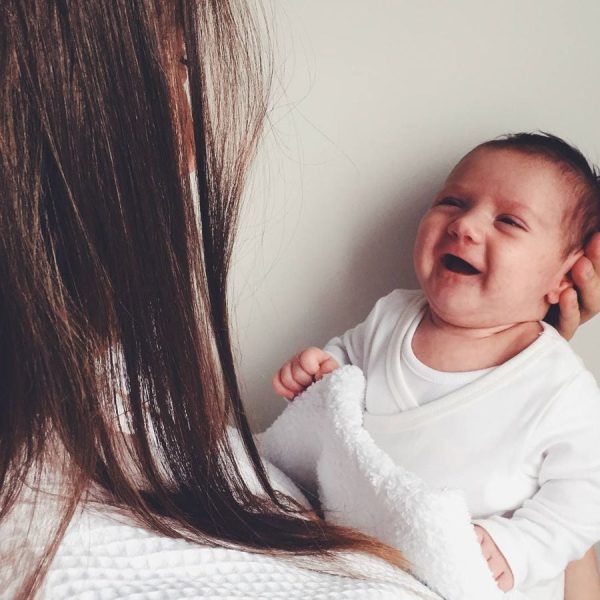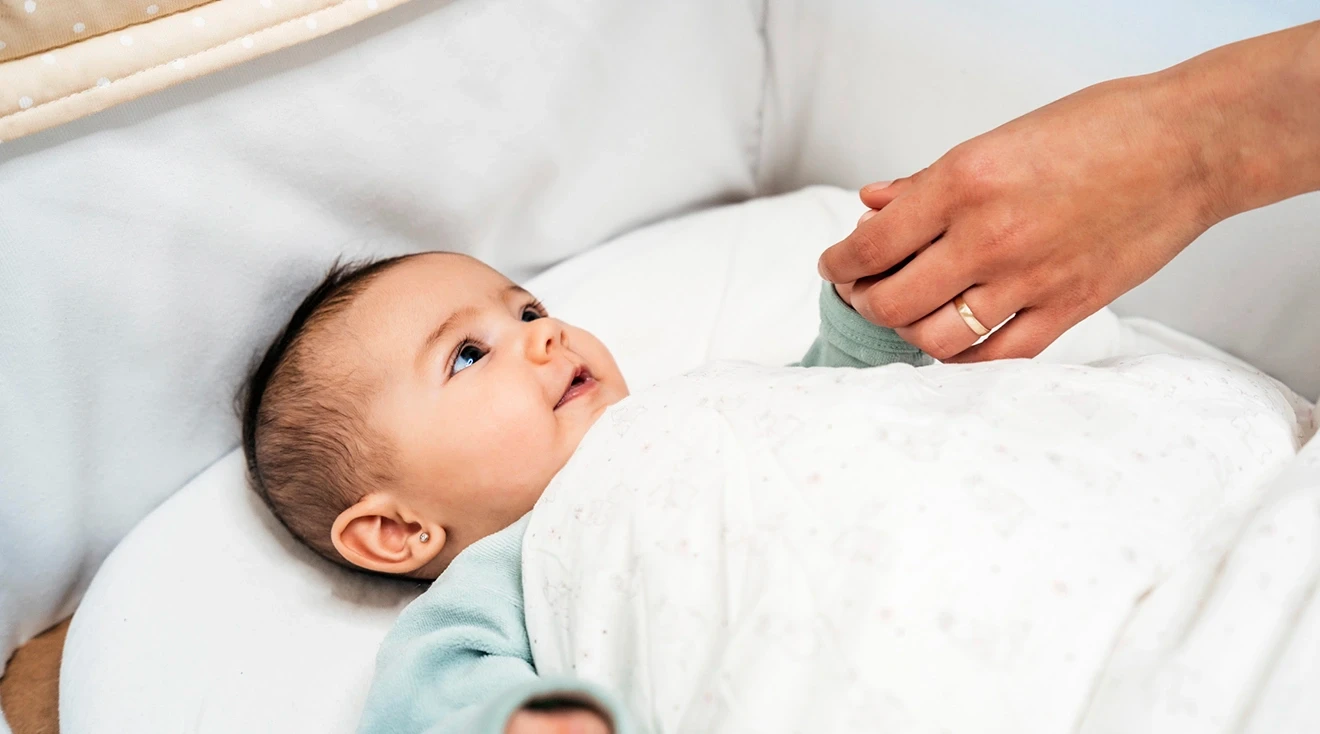From the first moment they enter our lives, babies have a unique way of capturing our hearts and leaving us in awe of their pure innocence. But amidst their constant babbling and adorable gurgles, how do babies actually communicate their love for us? In this article, we explore the various ways in which these little bundles of joy express their immense affection, reminding us of the unbreakable bond between parent and child. Prepare to be enchanted as we unravel the secrets behind the language of love spoken by our tiniest admirers.
Review contents
Understanding Babies’ Expressions of Love
As parents, we are constantly seeking ways to connect with our little ones and understand their needs and emotions. One of the most beautiful aspects of this journey is witnessing the expressions of love that our babies show us. Despite their limited language abilities, babies have a remarkable way of communicating their love and affection. In this article, we will explore various ways in which babies express their love and the significance behind each expression.
Cooing and Babbling
Vocalizations as Early Communication
Communication begins from the moment our babies are born. Cooing and babbling are some of the earliest forms of vocalizations that babies use to express their needs and emotions. These adorable noises serve as a precursor to language development and demonstrate your baby’s desire to connect with you.
Differentiating Cries and Coos
As parents, we quickly learn to discern our baby’s cries and coos. While cries signify discomfort or hunger, coos are a delightful way for babies to express pleasure and contentment. The gentle sounds they make while cooing often melt our hearts and reassure us that our little ones are happy and loved.
Expressing Pleasure through Cooing
When a baby coos, it is a clear indication that they are experiencing pleasure. They may coo in response to your voice, a gentle touch, or simply when they are happy and content. Responding to their coos with smiles and positive reinforcement reinforces the bond between parent and child and encourages further communication.
Babbling as a Language Development Milestone
As babies grow, their vocalizations progress from cooing to babbling. Babbling is an essential milestone in language development, as it signifies their emerging ability to mimic sounds and explore the nuances of vocal production. When your baby babbles, it is their way of engaging in conversation with you, even if they don’t yet understand the meaning of words.
This image is property of todaysparent.mblycdn.com.
Smiling and Laughter
The Power of a Baby’s Smile
Few things in life can rival the heart-melting power of a baby’s smile. From early infancy, babies instinctively respond to loving interactions with beaming smiles. A smile is their way of showing us that they feel safe, secure, and loved. As parents, our hearts soar when we see our baby’s face light up with a radiant smile.
Social Smiles and Genuine Happiness
Although babies may smile instinctively from birth, their smiles become more intentional and socially driven as they grow and develop. Social smiles are actively directed towards others and are a clear indication of their genuine happiness and affection. These smiles are not only contagious but also serve as a way of strengthening the parent-child bond.
Laughter and Joyful Interactions
Laughter is the sound of pure joy, and it holds a special place in a baby’s expression of love. When babies laugh, they are expressing delight and contentment, often in response to humorous or playful interactions. The giggles and chuckles that escape from their lips not only bring endless joy to our lives but also deepen the emotional connection we share with them.
Using Humor to Establish Bonding
Sharing laughter and humor with our babies is a powerful way to establish and nurture a close bond. Whether it’s funny faces, silly sounds, or playful tickles, engaging in lighthearted moments of laughter creates unforgettable memories and strengthens our connection. The ability to find joy and laughter together is a true testament to the love we have for our babies.
Eye Contact
Gazing into Your Eyes
From the very beginning, babies are drawn to our faces, particularly our eyes. When a baby gazes into your eyes, it is a moment of profound connection and affection. Their innocent gaze communicates a sense of trust, curiosity, and recognition, fostering a deep bond between parent and child.
Bonding through Visual Connections
Eye contact plays a vital role in establishing and strengthening the parent-child bond. By maintaining and reciprocating your baby’s gaze, you are actively participating in a shared visual connection. This visual bond builds a strong foundation of trust and security, as your baby recognizes that they are seen and understood by the person they love most.
Mutual Eye Contact as a Sign of Trust
Mutual eye contact is not only a sign of trust but also a crucial form of communication. Babies use eye contact to convey their needs, seek reassurance, and express their love. They rely on our ability to interpret their gaze and respond accordingly, further solidifying the bond between parent and child.
Reading Emotions and Expressing Love
Through their gaze, babies reveal their emotions and express their love for us. Their eyes sparkle with happiness, twinkle with delight, or brim with tears when they need comfort. As parents, we learn to decipher the subtle nuances in their expressions, allowing us to respond with love and compassion. The power of the eye-to-eye connection cannot be understated, as it allows us to share an unspoken language of love with our babies.
This image is property of images.ctfassets.net.
Physical Affection
Importance of Touch in Parent-Child Bonding
Physical affection is a fundamental aspect of parent-child bonding. From the moment our babies are born, they crave warmth, comfort, and the reassurance of our touch. Gentle caresses, loving cuddles, and soothing hugs provide them with a sense of security and safety, while also communicating our love for them.
Comforting Through Physical Contact
When babies seek physical contact, it is their way of seeking comfort and reassurance. The power of touch can soothe their worries, alleviate their distress, and convey a profound sense of love. Whether it’s cradling them in your arms, providing skin-to-skin contact, or simply holding their tiny hand, physical affection is a language of love that babies understand intuitively.
Cuddling, Hugging, and Snuggling
Cuddling, hugging, and snuggling are beautiful demonstrations of our love for our babies. These moments of physical intimacy create a safe and nurturing environment where our babies feel cherished and protected. The close physical proximity strengthens the bond between parent and child, heightening feelings of love and attachment.
Seeking Physical Proximity as an Expression of Love
Babies naturally seek physical proximity to their loved ones as a way of expressing their love. It is common to observe how they nestle close to us, seeking comfort in our presence. The feel of our warmth, the sound of our heartbeat, and the familiar scent of our skin all contribute to a sense of security and love that babies crave.
Imitating Actions
Mirror Neurons and Imitation
Imitation is a powerful tool in the early stages of a baby’s development. Mirror neurons, specialized cells in the brain, allow babies to observe and imitate the actions and expressions of others. By mirroring our behaviors, babies establish a shared understanding and a deeper connection with us.
Copying Facial Expressions and Gestures
As babies observe our facial expressions and gestures, they naturally attempt to mimic them. They learn to smile when we smile, pout when we pout, and wave when we wave. This imitation not only aids in their cognitive and emotional development but also strengthens the bond between parent and child.
Learning through Observation and Replication
Imitating actions serves as a form of learning for babies. By copying our movements, they acquire new skills, language patterns, and social behaviors. This process allows them to actively engage in the world around them and feel a sense of belonging and connection within their family unit.
Bonding through Shared Actions
When babies imitate our actions, it creates a profound sense of bonding. It demonstrates their desire to connect and their recognition of us as significant figures in their lives. Through shared actions, babies express their love and reinforce the unique bond they share with their parents.
This image is property of assets.babycenter.com.
Engaging in Play
Exploring the World Together
Play is an essential part of a baby’s development, and it also provides countless opportunities for parents and babies to connect emotionally. By engaging in play, we create a safe and joyful space for our little ones to explore the world around them while strengthening our bond through shared experiences.
Symbolic Play and Imagination
As babies grow, their play evolves to include symbolic play and imagination. They may engage in pretend play, where a stuffed animal becomes a tea party guest or a simple object becomes a spaceship. Through this imaginative play, babies exercise their creativity and invite us to join them in their world of make-believe.
Joint Attention and Social Play
Joint attention refers to the shared focus between parents and babies on a particular object or activity. It is a pivotal aspect of social play, where both parties actively engage and interact with each other. Joint attention creates a powerful connection and allows for meaningful back-and-forth exchanges of love and joy.
Sharing Joy and Building Emotional Connection
Playtime provides abundant opportunities for babies to express their love through laughter, smiles, and giggles. Their eyes light up with delight as they experience the joy of shared activities with their parents. By participating wholeheartedly in play and cherishing these moments, we deepen our emotional connection and create lasting memories.
Seeking Comfort and Security
Attachment and Emotional Safety
Attachment is the deep emotional bond that develops between parents and babies. It is built on a foundation of emotional safety, trust, and responsiveness. When babies seek comfort from their parents, they are expressing their need for emotional reassurance and the love that we provide.
Crying to Signal Need for Comfort
Crying is one of the most potent expressions of a baby’s need for comfort and connection. It is their way of communicating that they require our presence and care. Responding promptly and lovingly to their cries reinforces their trust in us and solidifies the parent-child bond.
Reaching out for Soothing Touch
Babies instinctively reach out for soothing touch when they need comfort. They may cling to us, grasp our fingers, or snuggle against our chest. These physical gestures are an expression of their love, as they find solace and security in our embrace. Embracing their need for touch ensures that their emotional worlds remain rich with love and security.
Finding Love in a Secure Environment
Feeling loved and secure in their environment is vital for a baby’s emotional well-being. By creating a safe and nurturing space, we provide them with the love and support they need to thrive. When babies seek comfort from us, they affirm the strength of their attachment and their unwavering love.
This image is property of tinybeans.com.
Showing Preference
Recognizing Loved Ones
From an early age, babies start to recognize and establish preferences for their loved ones. They learn to differentiate between familiar faces and voices, highlighting their innate ability to express their love through preference. As parents, we delight in witnessing their recognition and the joy they exhibit upon seeing their favorite individuals.
Identifying Familiar Voices and Faces
Babies have a remarkable ability to identify and remember the voices and faces of their loved ones. They may turn their heads towards a familiar voice or smile brightly when they see a beloved face. Expressing their love through these preferences reinforces the emotional connection they feel towards those closest to them.
Smiling and Reaching Towards Preferred Individuals
When babies smile and reach towards their preferred individuals, it is a clear expression of love and affection. Their recognition and excitement provide us with a glimpse into their growing understanding of the people who love and care for them. These special moments of joy remind us of the unique bond we share with our babies.
Demonstrating Attachment
Showing preference is a reflection of a baby’s attachment to their loved ones. The emotional connection they feel towards their parents and caregivers strengthens as they grow and develop. Through their smiles, joyful reactions, and reaching gestures, babies demonstrate their deep attachment and the love they have for those who are most important to them.
Responding to Your Voice
The Magical Sound of Your Voice
The sound of our voice holds immense power over our babies. From the moment they are born, they are captivated by the soothing tones and familiar cadence of their parents’ voices. Responding to your voice by cooing, smiling, or turning their head towards you indicates their strong emotional connection and the love they feel.
Recognizing Familiarity and Safety
Babies quickly learn to recognize the sound of their parents’ voices, associating it with familiarity, comfort, and safety. Your voice becomes a source of reassurance and love, conveying a sense of belonging and emotional security. Whether you sing lullabies, read stories, or simply have a conversation, your voice is a powerful means of communication and connection.
Establishing Verbal Bonding
By responding to your voice, babies establish a unique verbal bonding with you. They learn to anticipate your words and understand the meaning behind the tone and inflection in your voice. Through verbal interactions, babies express their love, actively engaging in the process of communication and deepening the connection they share with you.
Creating Musical Moments of Love
Your voice can be a source of musical moments of love for your baby. From gentle humming to melodic singing, the calming and joyful tones of your voice can soothe, entertain, and establish a sense of closeness. These musical moments provide a unique opportunity to bond with your baby and create loving memories that will last a lifetime.
This image is property of cdn.shopify.com.
Displaying Trust and Relaxation
Contentment and Emotional Security
When babies feel safe, loved, and emotionally secure, they display a visible state of contentment. Their relaxed state of being is a powerful indicator of the trust they have in you and the love they feel. Observing your baby’s relaxed expression and calm demeanor reassures you that you are providing them with the nurturing environment they need.
Relaxing in the Presence of Loved Ones
Babies instinctively relax in the presence of their loved ones. They find comfort and security in the familiar embrace, scent, and touch of their parents. The ability to let go of tension and be completely at ease speaks volumes about the love and trust they have for you. Cherishing these moments of relaxation fosters an even stronger bond between parent and child.
Positive Body Language and Facial Expressions
Babies express their love through positive body language and facial expressions. The absence of tension, a soft smile, and relaxed limbs all convey a message of love and contentment. Their nonverbal cues speak volumes about the trust and relaxation they feel in your presence, reaffirming the strength of your bond.
Building a Strong Bond
Trust and relaxation are essential components in building a strong bond with your baby. By creating a loving and secure environment, you provide them with the foundation to form deep emotional connections and develop a sense of self-worth. Recognizing their displays of trust and relaxation allows you to strengthen your bond and create a lifetime of love and happiness together.
In conclusion, babies have a unique way of expressing their love and affection despite their limited language abilities. From cooing and babbling to smiling and laughter, their expressions of love mesmerize and strengthen the bond between parent and child. Eye contact, physical affection, imitation, play, seeking comfort, showing preference, responding to your voice, and displaying trust and relaxation all contribute to the beautiful journey of love with our babies. As parents, it is a joyous privilege to witness and reciprocate these expressions of love, laying the foundation for a lifetime of love, trust, and emotional connection.



































